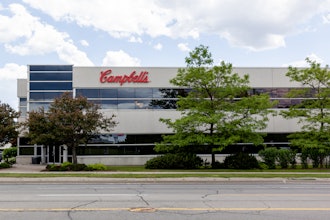
 Jack Payne, vice president of product management and solution consulting, Aptean
Jack Payne, vice president of product management and solution consulting, ApteanEven before the Food Safety Modernization Act (FSMA) was signed into law January 2011, food safety has been a major concern for the food industry and consumers.
The Global Food Safety Initiative (GFSI) was established in May 2000 to establish a safer supply chain and regain consumer trust following a number of high-profile food recalls. Since then, several major food retailers have required their suppliers (food manufacturers) to comply with GFSI standards, including Food Safety certification from a list of approved standards. Many food manufacturing companies decided to obtain certifications, while others have chosen not to obtain GFSI certifications at all. It wasn’t a matter of being less concerned about food safety; it was simply not a business requirement. These companies continued to produce quality products with safety procedures in place, just without the documentation that a certification body would require.
Fast forward to the last quarter of 2015, and FSMA rules have been finalized. The compliance date for many companies is a looming deadline in 2016. What steps are those companies taking to comply with the regulations, and how much of an impact is it having on their organization? Here are three hypothetical examples:
Getting Certified
A regional grocery chain offers prepared foods, meats, bakery and other prepared foods that they produce in their own factories. This chain is self-reliant, only distributing and selling the products that it manufactures in its own stores, controlling its entire distribution process. By having a contained process, the grocery chain has not needed to maintain a GFSI certification. The company employs a downstream strategy, such as buying from trusted suppliers that have food safety and recall procedures in place. In order to be on target with FSMA regulations, the process to comply with regulations will be more strenuous, and extensive effort will be required in a short period of time because they have not gone through food safety certifications in the past. Safe Quality Food (SQF) certification would be a starting point, as the main areas of SQF certification are largely comparable to what is required under FSMA.
Creating a System
A candy company has had a loyal following for three generations, before food safety was at the forefront. The company manufactures and distributes its high quality candies nationally in retail and boutique stores, instead of a traditional grocery store. Because candy is not a high-risk product for recall, and since their product was not sold in grocery stores with other food items, the organization has not considered GFSI certification in the past. However, with the new FSMA regulations, the company will now have to document their preventative and recall procedures. They may have to implement point solutions that are not integrated with their overall business system in order to meet the looming deadlines. One such point is a quality only test that addresses the prevention aspect of FSMA, but does not provide for traceability documentation, which will impact future productivity. The Quality Control department will be solely focused on FSMA for the remainder of 2016.
Filling Gaps
A private label manufacturer that sells various food products to large chain stores currently holds SQF certification, because it was required to continue doing business with its larger customers. As a result of SQF certification for several years, the necessary procedures to satisfy FSMA regulations for prevention are in place, although they may need to adapt the format for FSMA. However, there may be gaps when it comes to the traceability requirements. They have a Warehouse Management System (WMS) for shipping products to customers, which also tracks inventory and lots shipped from the distribution center to the retailer, but it does not trace the finished good lots back to the factories and raw materials that produced each lot. At that point, a manual system is in place to track ingredients from the suppliers. While FSMA does not specify how the tracking is done, there are guidelines on how quickly a product can be traced through the supply chain. A trained employee can sort through the stacks of paper in a matter of hours; however, for someone unfamiliar with the ad hoc system, it could take days to trace supplies to their source. While this company will be able to easily comply with the prevention requirements of FSMA, they will need to review and put into place systems to track from the finished goods lot back to the raw material lots and suppliers.
Documentation is Key
These three examples show how the FSMA is going to impact each company to varying degrees, whether it is getting certified, creating a system or working to fill the gaps. Given that many organizations are also facing scrutiny for the first time, documentation will probably be the greatest challenge they face. Years of experience in producing safe foods will not matter if the proper documentation is not in place, which means companies will need to adapt to the format required by FSMA or begin to document procedures not yet formalized.






















